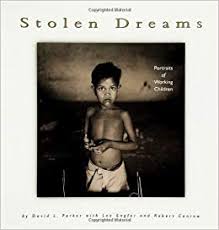Labor Day: Children at Work
Listen to the Recess! Clip
| Author | John Cech |
| Air Date | 9/6/2004 |

Labor Day: Children at Work Transcript
Today is Labor Day, a holiday that is meant to celebrate the hard-working women and men who have built our own and every other country. Left out of this commemoration, though, are the many children who were and still are part of our national work-force. America’s child labor laws did not become permanent until the 1930s, during the Depression, when out-of-work adults found themselves needing the jobs that were usually left to youngsters. Though today, in the United States, children are prohibited by law from performing the hard work in field and factory that they routinely used to do, there are still hundreds of jobs that children perform — and not just their chores around the house, the lawns they cut, the cars they wash, or the babies they sit for. Today, the children of migrant workers are still at work in the fruit orchards and vegetable fields; the children of new immigrants work in urban factories; children help out in family-run restaurants and other businesses; they deliver newspapers; they sell magazines door to door; they work in carnivals and circuses — usually under the official radar.
And in many other countries, the plight of children is, simply and horrifically bleak. In Stolen Dreams by David L. Parker, Lee Engfer and Robert Conrow we look into the lives of children like Iqbal Masih, who began his fourteen-hour a day shifts as a carpet weaver in Pakistan when he was just four years old. By the time he was ten, Iqbal had become an outspoken advocate for children’s rights around the world — for the children who make bricks and matches, fireworks and pencils, cigarettes and soccer balls, sneakers and sesame seed oil. By the time Iqbal was twelve, he had been killed, quite probably because of his views.
Listen to Us, The World’s Working Children by Jane Springer also combines biographical profiles and facts that are equally alarming. In her thoughtful, clear presentation that is meant to inform young people, we learn that there are over three quarters of a million child farm workers in the United States. That an estimated 15 million children work as bonded manual laborers in India. That in Peru, more than 7 million children under the age of fifteen are laboring, some of them forced underground as gold miners. There are some organizations and groups, like UNICEF, Street Kids International, Canada’s “Free the Children,” and the U.S.’s “Foul Ball Campaign” that are attempting to help ease the burdens on working children around the world by raising consciousness concerning the ways that they continue to be exploited. And some American youngsters in Massachusetts have raised funds for schoolchildren in India, so that they may be saved from bonded labor. They have done so in memory of Iqbal, and they call their website: “A Bullet Can’t Kill a Dream.” http://www.digitalrag.com/iqbal/